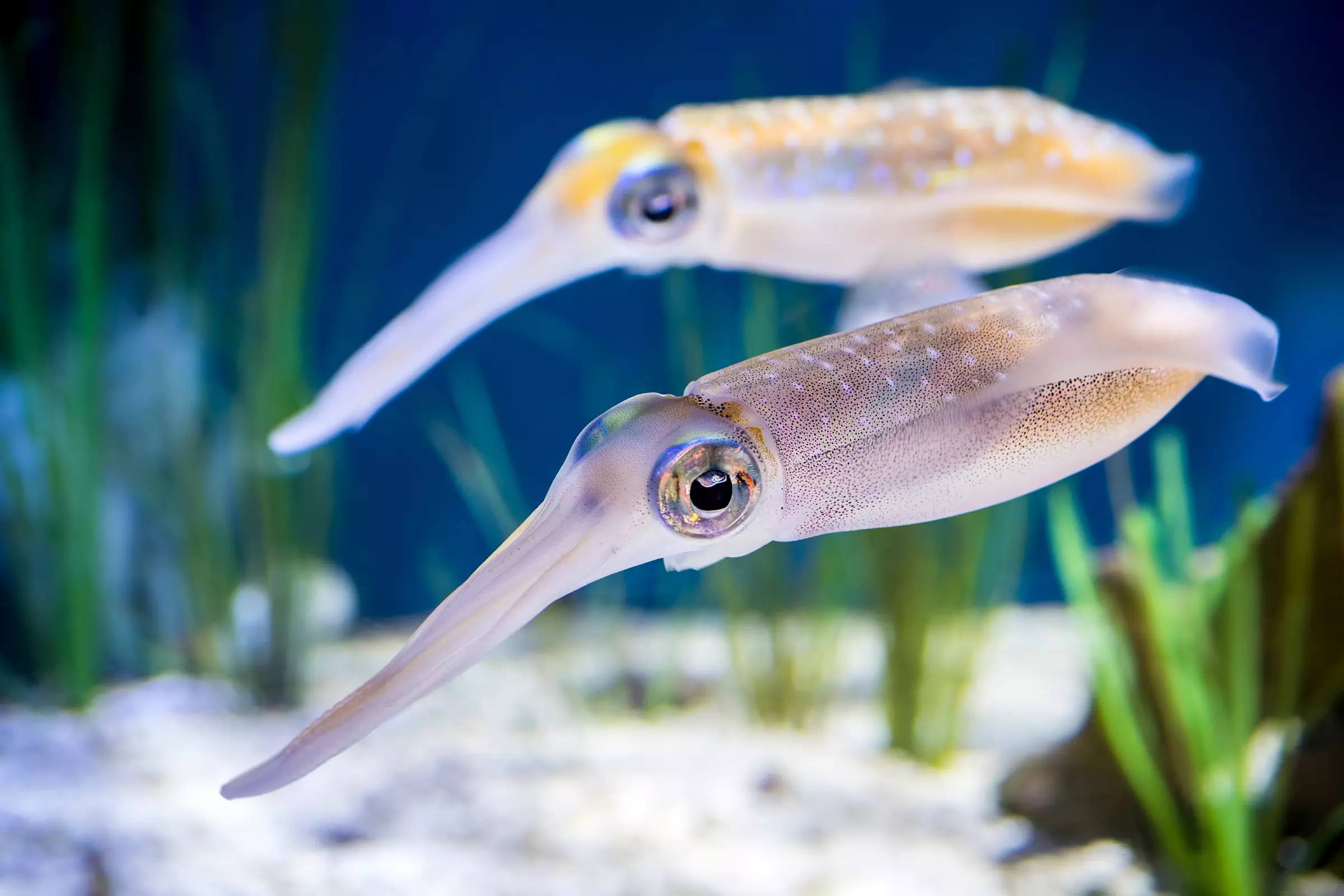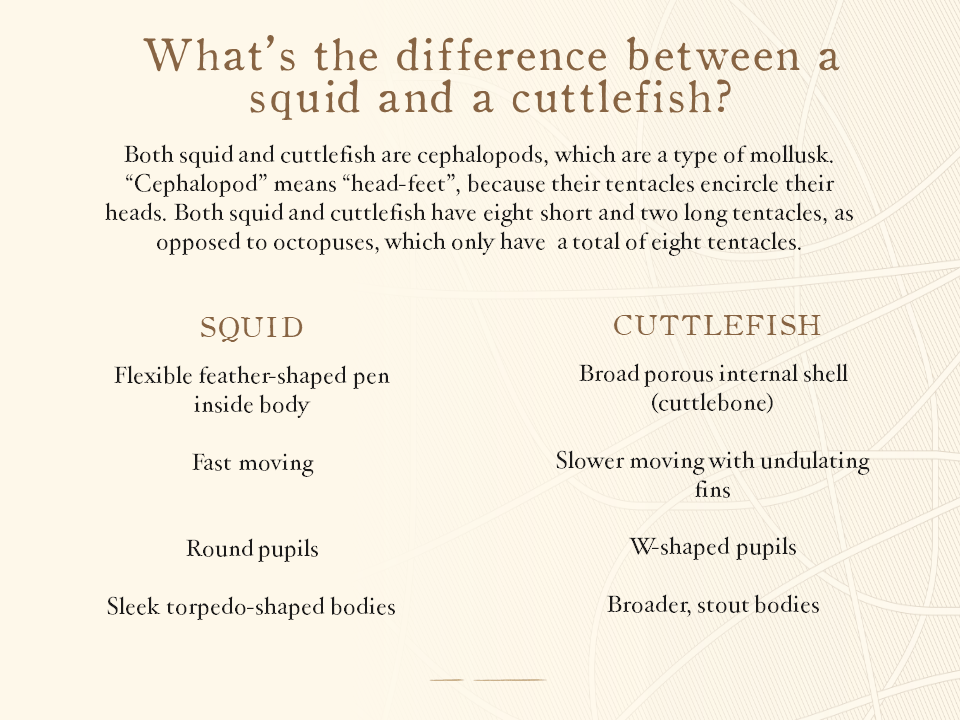If you’re lucky, on a quiet, still morning in the lagoon at Gili Lankanfushi, you might be able to spot the glittering silhouettes of the bigfin reef squid (Sepioteuthis lessoniana). These small squid are most active at night, but can often be seen during the day hovering high up in the water column in small groups. You can also find shoals of juveniles hiding under Castaway, the floating pontoon in the lagoon. Although they may seem to move slowly at first, they are unfathomably quick to move when startled, and can be gone in a flash!

People often mistake the bigfin reef squid for cuttlefish, as they have big long oval fins (hence their name) that extend down both sides of their body, nearly all the way down the mantle. In most other squid species, the fins only occupy the top third or half of the mantle. The bigfin reef squid is also known as the glitter or oval squid.

The bigfin reef squid is one of the most widely distributed Sepioteuthis species, being found across the Indian and Pacific Oceans. This squid has even migrated through the Suez Canal to the Mediterranean Sea. It is also one of the most commercially important squid species for food in Asia, as they are one of the fastest growing species of squid.
Humans are not the only hunters of these squid, with tuna, marlin, swordfish, sharks, whales, birds and bottom-dwelling fish like rays also preying upon them. To avoid being an easy meal, the squid have adopted several defense mechanisms. For example, these squid are famous for their giant axons. These are very big nerves that allow messages to be delivered incredibly quickly from the brain to the jet propulsion system so that the squid can react with lightning speed to move away from a potential threat.
Perhaps an even more fascinating method of defense though, is the bigfin reef squid’s ability to produce pseudomorphs.

The bigfin reef squid has an internal pear-shaped ink sac and ejects ink from the same siphon it uses for jet propulsion. The ink, which is made of melanin, a biopolymer, is mixed with a type of mucus that holds the ink in certain shapes. The bigfin reef squid has the incredible ability to produce ink pseudomorphs. This means that it can leave globules of ink in the water that hang in the shape (and colour) of the squid itself, while the real thing jets away. These ink pseudomorphs act as decoys. Predators can’t tell the difference between the pseudomorph and the actual squid. The squid may even change to a lighter colour (blanch) as it shoots away from the dark ink squid it leaves in its place. We were lucky enough to witness two squid producing pseudomorph series (more than two pseudomorphs in a short space of time) in the lagoon when the squid thought that we were the predator (watch the video at https://youtu.be/Dqku3oLPdTQ)!
There is another layer of complexity to these incredible inky decoys. Along with the melanin and mucus, there are other chemicals such as dopamine, taurine and glutamate in the ink. It is thought that these chemicals, when eaten by the predator, may cause them to calm their hunt, confuse the predator, or may taste bad to deter the predator. Further research will be needed to reveal the full impact of these inky pseudomorphs, but it has been shown that squid ink has largely remained the same since the Jurassic period and hence, nature already seems to have found its perfect recipe.